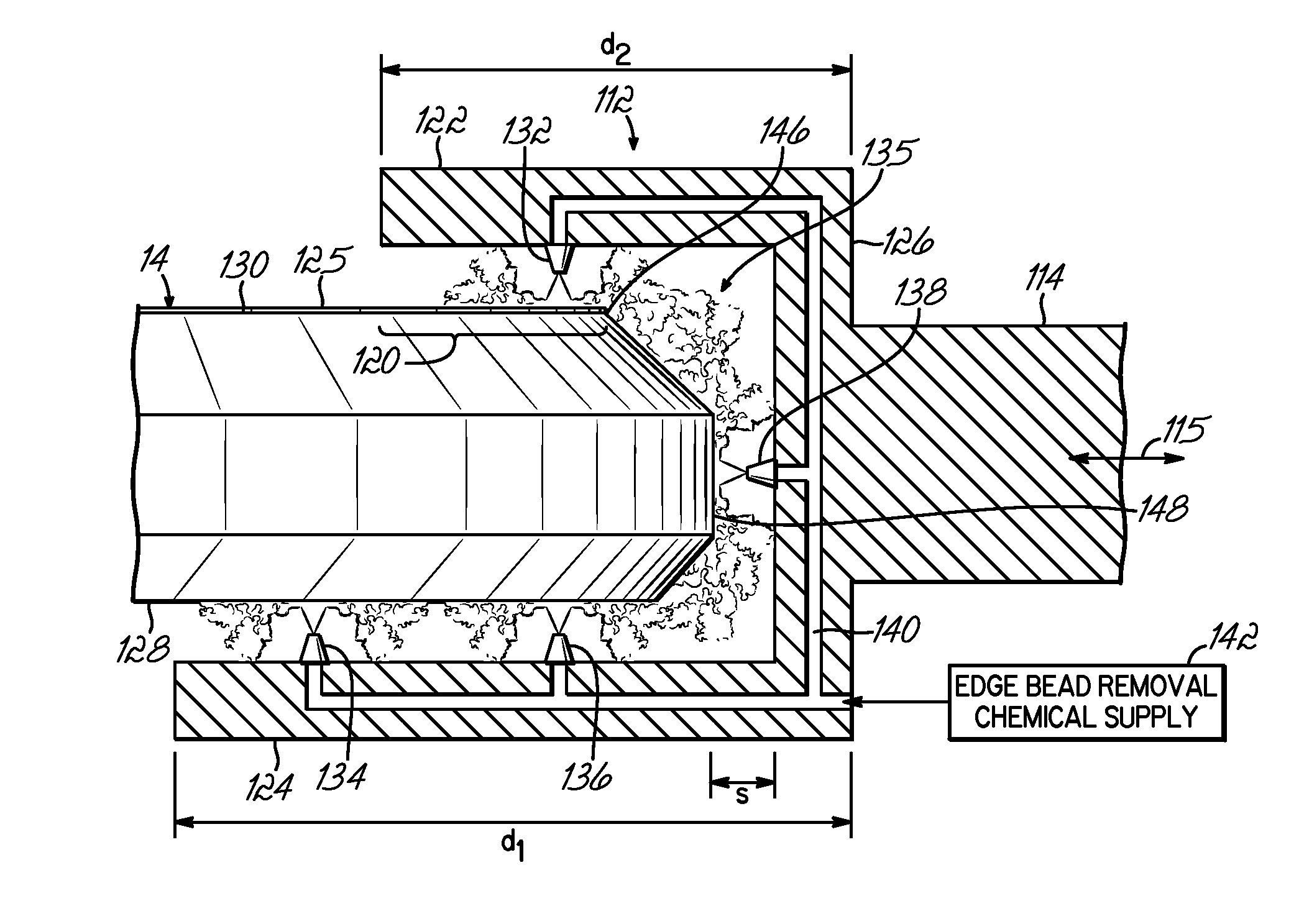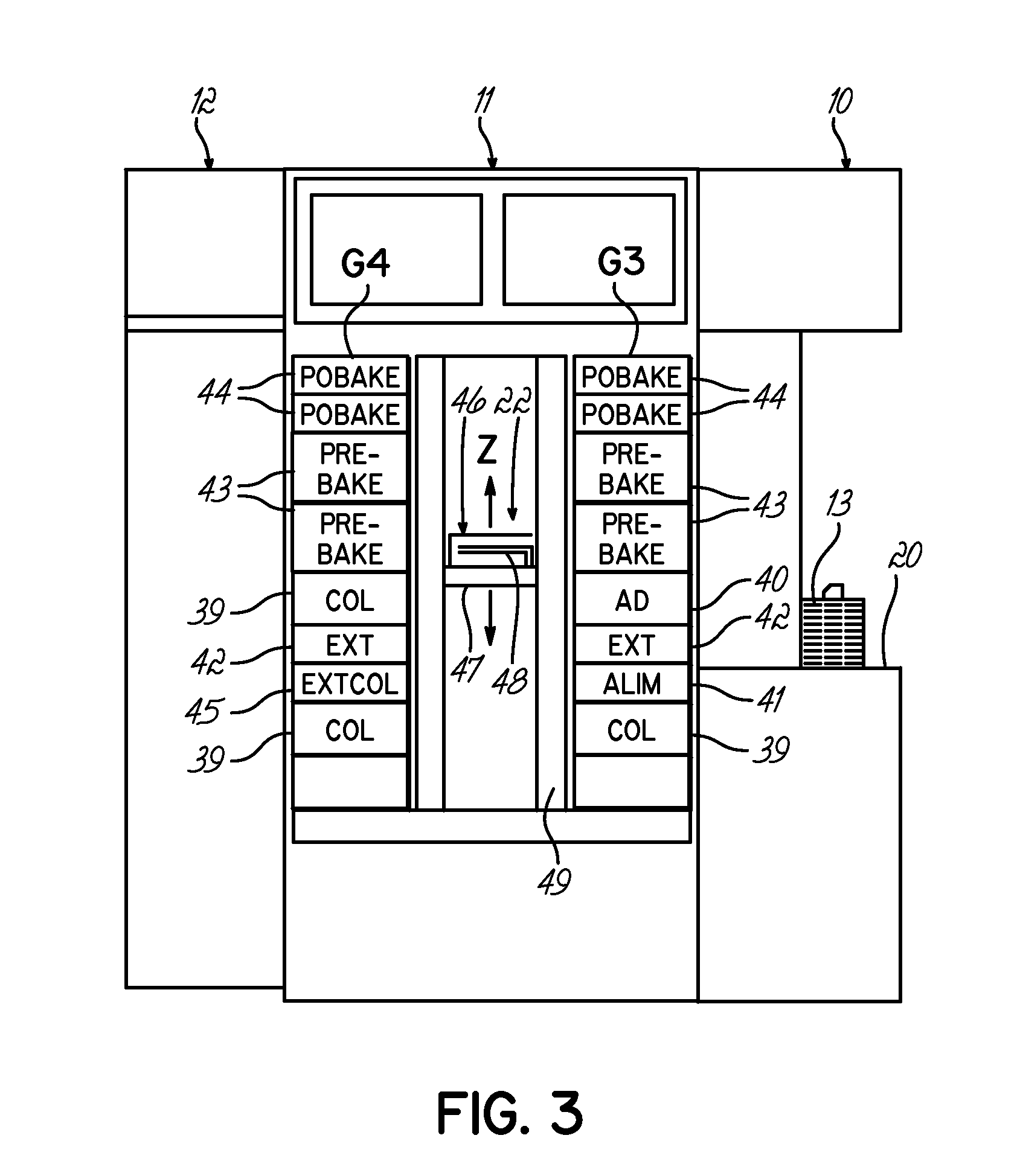Apparatus and method for removing an edge bead of a spin-coated layer
a technology of edge beads and spin-coated layers, which is applied in the direction of coatings, pretreatment surfaces, cleaning using liquids, etc., can solve the problems of difficult control of solvent delivery, yield loss of integrated circuits being built on the wafer, and the proportion of edge beads subsequently detaching from the wafer and becoming a source of particulate contamination
- Summary
- Abstract
- Description
- Claims
- Application Information
AI Technical Summary
Benefits of technology
Problems solved by technology
Method used
Image
Examples
Embodiment Construction
[0019]With reference to FIGS. 1-3, a coating / developing process system 1 comprises a cassette station 10, a process station 11, and an interface section 12, which are contiguously formed as one unit. In the cassette station 10, a cassette (CR) 13 storing a plurality of substrates represented by wafers (W) 14 (e.g., 25 wafers) is loaded into, and unloaded from, the system 1. The process station 11 includes various single-wafer processing units for applying a predetermined treatment required for a coating / developing step to individual wafers (W) 14. These process units are arranged in predetermined positions of multiple stages, for example, within first (G1), second (G2), third (G3), fourth (G4) and fifth (G5) multiple-stage process unit groups 31, 32, 33, 34, 35. The interface section 12 delivers the wafers (W) 14 between the process station 11 and an exposure unit (not shown) that can be abutted against the process station 11.
[0020]A cassette table 20 of cassette station 10 has posi...
PUM
 Login to View More
Login to View More Abstract
Description
Claims
Application Information
 Login to View More
Login to View More - R&D
- Intellectual Property
- Life Sciences
- Materials
- Tech Scout
- Unparalleled Data Quality
- Higher Quality Content
- 60% Fewer Hallucinations
Browse by: Latest US Patents, China's latest patents, Technical Efficacy Thesaurus, Application Domain, Technology Topic, Popular Technical Reports.
© 2025 PatSnap. All rights reserved.Legal|Privacy policy|Modern Slavery Act Transparency Statement|Sitemap|About US| Contact US: help@patsnap.com



